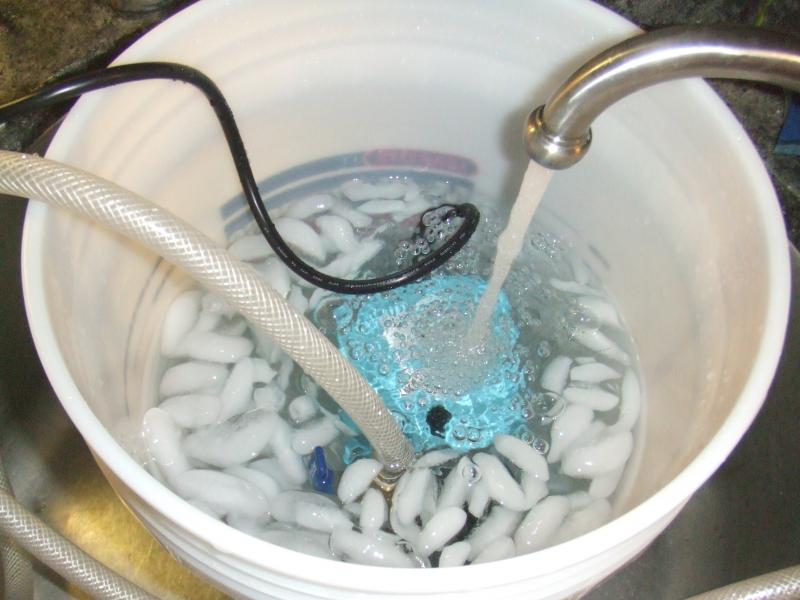jawilson20
Well-Known Member
Yesterday my water was a balmy 80 degrees out of the faucet here in Atlanta. I use a plate chiller in my single tier setup. I plan to add fittings to my chiller to allow pumping of ice water through it, but do not yet have that capability. So I was left with a bit of a conundrum yesterday afternoon.
I was brewing and IPA in this instance and planned to add 1056 American Ale yest. After I transferred to my carboy I was looking at 80 degree wort. What is the highest temperature you will pitch your yeast at? In this instance is it better to put my carboy in the ferm chamber without yeast and allow it to cool to my preferred temp of 65 the pitch the yeast? If this is the route to take should I shake to carboy at this time to aerate the wort?
Or is it acceptable to pitch at 80 and know that the ferm chamber will bring down the temp of the wort in a few hours?
What are some of the off flavors you might get from pitching yeast into too warm wort?
I was brewing and IPA in this instance and planned to add 1056 American Ale yest. After I transferred to my carboy I was looking at 80 degree wort. What is the highest temperature you will pitch your yeast at? In this instance is it better to put my carboy in the ferm chamber without yeast and allow it to cool to my preferred temp of 65 the pitch the yeast? If this is the route to take should I shake to carboy at this time to aerate the wort?
Or is it acceptable to pitch at 80 and know that the ferm chamber will bring down the temp of the wort in a few hours?
What are some of the off flavors you might get from pitching yeast into too warm wort?





























![Craft A Brew - Safale S-04 Dry Yeast - Fermentis - English Ale Dry Yeast - For English and American Ales and Hard Apple Ciders - Ingredients for Home Brewing - Beer Making Supplies - [1 Pack]](https://m.media-amazon.com/images/I/41fVGNh6JfL._SL500_.jpg)






























